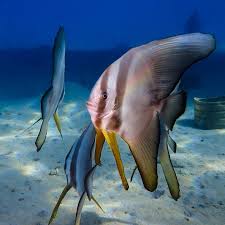The Presence of Dragons in Contemporary Chinese Literature: Symbolism, Influence, and Cultural Significance

Dragons have long been symbols of power, wisdom, and mysticism in Chinese culture. These mythical creatures, often associated with imperial authority and divine protection, have appeared in various forms throughout China’s rich literary tradition. From ancient classical texts to modern-day literature, dragons have maintained their prominence, evolving in significance and appearance across different historical periods. In contemporary Chinese literature, the dragon continues to appear as both a literal and symbolic presence, often representing themes of transformation, cultural identity, and the intersection of tradition and modernity.
This article explores the presence of dragons in contemporary Chinese literature, focusing on how modern writers have reinterpreted the dragon motif, how it reflects contemporary societal issues, and the cultural significance it holds in today’s rapidly changing world. By examining the ways in which dragons appear in the works of contemporary authors, we gain insight into their enduring role in shaping the narrative of Chinese literary identity and their continued relevance in modern storytelling.
1. The Dragon as a Cultural and Literary Symbol
1.1 The Evolution of the Dragon Symbol in Chinese Literature
Throughout history, the dragon has served as a potent symbol in Chinese literature. In ancient works, such as the Classic of Mountains and Seas (山海经) and Journey to the West (西游记), dragons were often depicted as mysterious, powerful beings capable of controlling elements like water, weather, and fate. As the ancient Chinese understanding of the cosmos evolved, so did the dragon’s role in literature, often embodying imperial power, cosmic harmony, and natural forces.
In the Tang and Song Dynasties, the dragon’s symbolism was further entrenched as it became associated with the emperor and the imperial family. During the Ming and Qing Dynasties, dragons were prominently featured in imperial art, literature, and architecture, symbolizing the emperor’s connection to the celestial realm and his divine right to rule. However, as Chinese society transitioned into the modern era, especially during the 20th and 21st centuries, the way in which the dragon appeared in literature began to shift.
1.2 Dragons in Modern Chinese Thought
In contemporary Chinese literature, the dragon no longer exclusively embodies the grandeur of imperial rule but also represents the complexities of modern identity, cultural heritage, and transformation. With the advent of modernism and social change, dragons in contemporary works are often portrayed in more nuanced and symbolic roles, reflecting Chinese society’s engagement with tradition and its attempts to navigate modernity. In these modern depictions, dragons are sometimes depicted as mythical creatures of the past, nostalgic representations of China’s ancient heritage, while other times, they appear as metaphors for internal struggles or societal evolution.
2. Dragons in Contemporary Chinese Literature: Key Themes and Representations
2.1 The Dragon as a Metaphor for National Identity and Modern Transformation
A recurring theme in contemporary Chinese literature is the exploration of national identity in the context of China’s rapid modernization and its growing global influence. As China has undergone social, political, and economic transformations, the dragon’s symbolism has evolved to reflect the nation’s journey from a historically isolated empire to a modern global power.
In works by authors like Mo Yan and Yu Hua, the dragon often symbolizes China’s struggle between traditional values and the forces of globalization. In these novels, the dragon represents the tension between the country’s rich cultural heritage and the pressures of modernization and globalization. For example, Mo Yan’s works often reflect the rural, traditional life of China while simultaneously addressing the rapid industrialization and urbanization that have transformed the country in recent decades. In such contexts, dragons may appear as symbolic figures—not only embodying the ancient mythology but also serving as metaphors for cultural memory and the imperial past.
2.2 The Dragon and the Cultural Reconnection with the Past
In addition to representing modern transformation, dragons are also used in contemporary literature to emphasize nostalgia and a desire for a reconnection with China’s cultural past. Many contemporary Chinese writers, particularly those in the diaspora, use the dragon as a tool for exploring themes of loss, migration, and the search for cultural roots.
For instance, Ha Jin, in works like “Waiting”, reflects on the complexities of living in modern China while yearning for the values and traditions of the past. The dragon, in this case, becomes a symbol of heritage—a reminder of the cultural richness that may be lost in the process of rapid social change. Such representations challenge the disconnection that often arises as China moves further into the future, urging readers to reflect on the balance between progress and preservation of cultural identity.
3. Dragons in the Works of Prominent Contemporary Authors
3.1 Mo Yan and the Dragon in Rural China
Mo Yan, a Nobel Prize-winning Chinese author, is well-known for incorporating elements of traditional Chinese mythology and folklore into his works. His novels, such as “Big Breasts and Wide Hips” and “Frog”, often feature dragons as metaphors for the intersection of rural life, tradition, and modernity. In these works, dragons are frequently used to symbolize the powerful forces of nature, the spirituality embedded in the land, and the historical struggles of Chinese people in rural settings.
Mo Yan’s dragons are often not literal, but rather symbolic representations of the complex, sometimes violent, relationship between the Chinese people and their land. For example, in “Big Breasts and Wide Hips”, the dragon symbolizes the spiritual connection to the land and the deep-rooted customs that persist even amidst the shifting tides of history. Through the dragon, Mo Yan examines the way in which China’s cultural history and its modern realities coexist—often uneasily—and how the dragon’s power both protects and threatens the nation’s future.
3.2 Yu Hua and the Contemporary Dragon as a Symbol of Conflict
In contrast to Mo Yan’s rural focus, Yu Hua, a contemporary Chinese writer known for his work “To Live”, addresses the dragon’s role in urban and modern settings. The dragon in Yu Hua’s works symbolizes the struggle and resilience of the Chinese people in the face of historical upheavals such as the Cultural Revolution and the economic reforms of the late 20th century. For Yu Hua, dragons are sometimes seen as representations of the invisible power that shapes the lives of ordinary people—a power that is both potent and uncontrollable.
In “Chronicle of a Blood Merchant”, Yu Hua explores the human cost of modernization, and the dragon serves as a symbol of hope amidst a chaotic and uncertain world. The dragon, with its roots in Chinese folklore, becomes a metaphor for transformation—not only in terms of society but also in terms of the individual’s journey toward self-discovery and personal growth.
4. The Dragon’s Role in Contemporary Chinese Fantasy Literature
4.1 The Dragon in Chinese Fantasy Fiction
In addition to appearing in works of contemporary realistic literature, the dragon also plays a significant role in fantasy literature. Writers such as Jin Yong (Louis Cha) and Cao Wenxuan have utilized the dragon in their fantasy novels as both literal and symbolic figures. In these works, dragons represent the mystical and spiritual elements of Chinese culture and are often linked to ideas of martial prowess, virtue, and spiritual power.
In Jin Yong’s “The Legend of the Condor Heroes”, dragons are part of the wuxia genre (martial arts fiction), where they symbolize the ultimate martial hero and the power of righteousness. The dragon serves as both a mythical creature and a spiritual guide, offering wisdom and strength to the protagonist on their journey of self-discovery and moral growth. The dragon in this context is a transformative figure, embodying the values of honor, courage, and selflessness.
5. Conclusion: The Enduring Presence of the Dragon in Contemporary Chinese Literature
The dragon in contemporary Chinese literature is a multifaceted symbol that continues to evolve and resonate with readers in modern China. Whether depicted as a guardian of tradition, a symbol of national identity, or a reflection of internal conflict and transformation, the dragon remains a central motif in Chinese storytelling. As China continues to navigate its rapid modernization while striving to maintain its rich cultural heritage, the dragon will undoubtedly continue to appear in literature as a powerful symbol of both past and future, tradition and change.
The enduring presence of the dragon in contemporary Chinese literature underscores the depth and complexity of Chinese culture, as it seeks to reconcile the tension between old and new while remaining rooted in a powerful mythological legacy. The dragon remains not only a symbol of strength and power but also a reminder of the interconnectedness of history, identity, and modernity. As China continues to grow and evolve, the dragon will remain a key figure in its literary imagination, reflecting both the struggles and the hope of its people.

